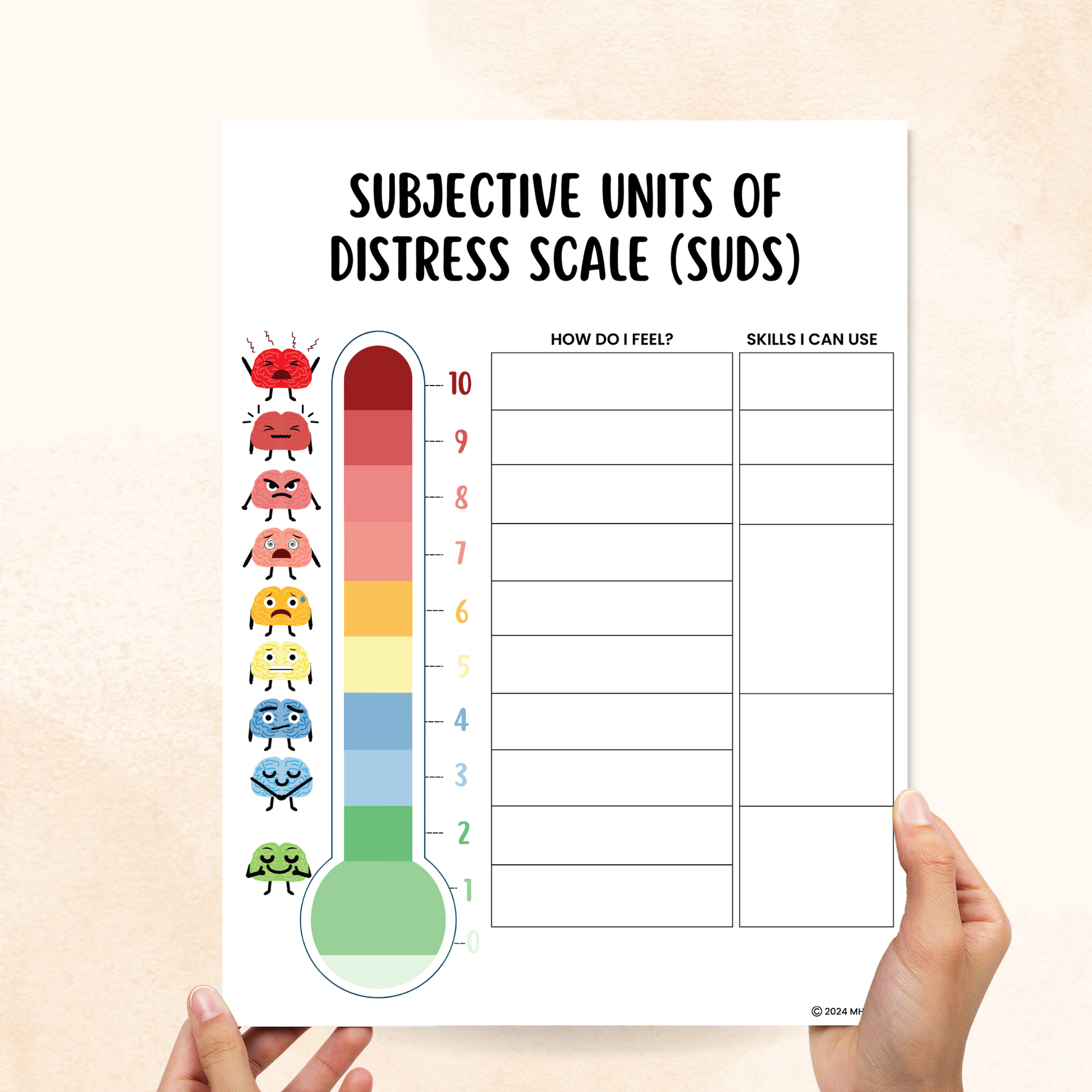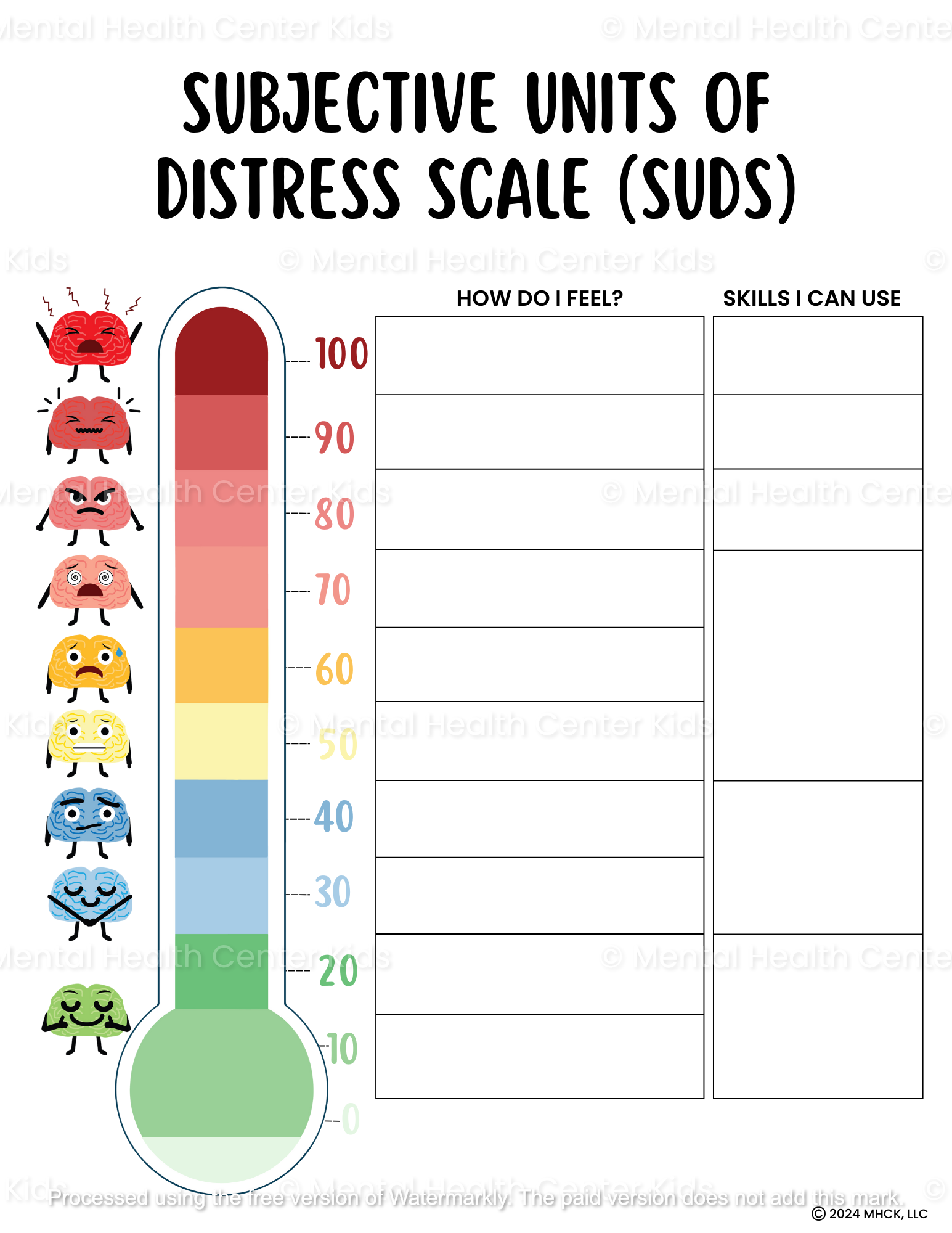Subjective Units Of Distress Scale Worksheet

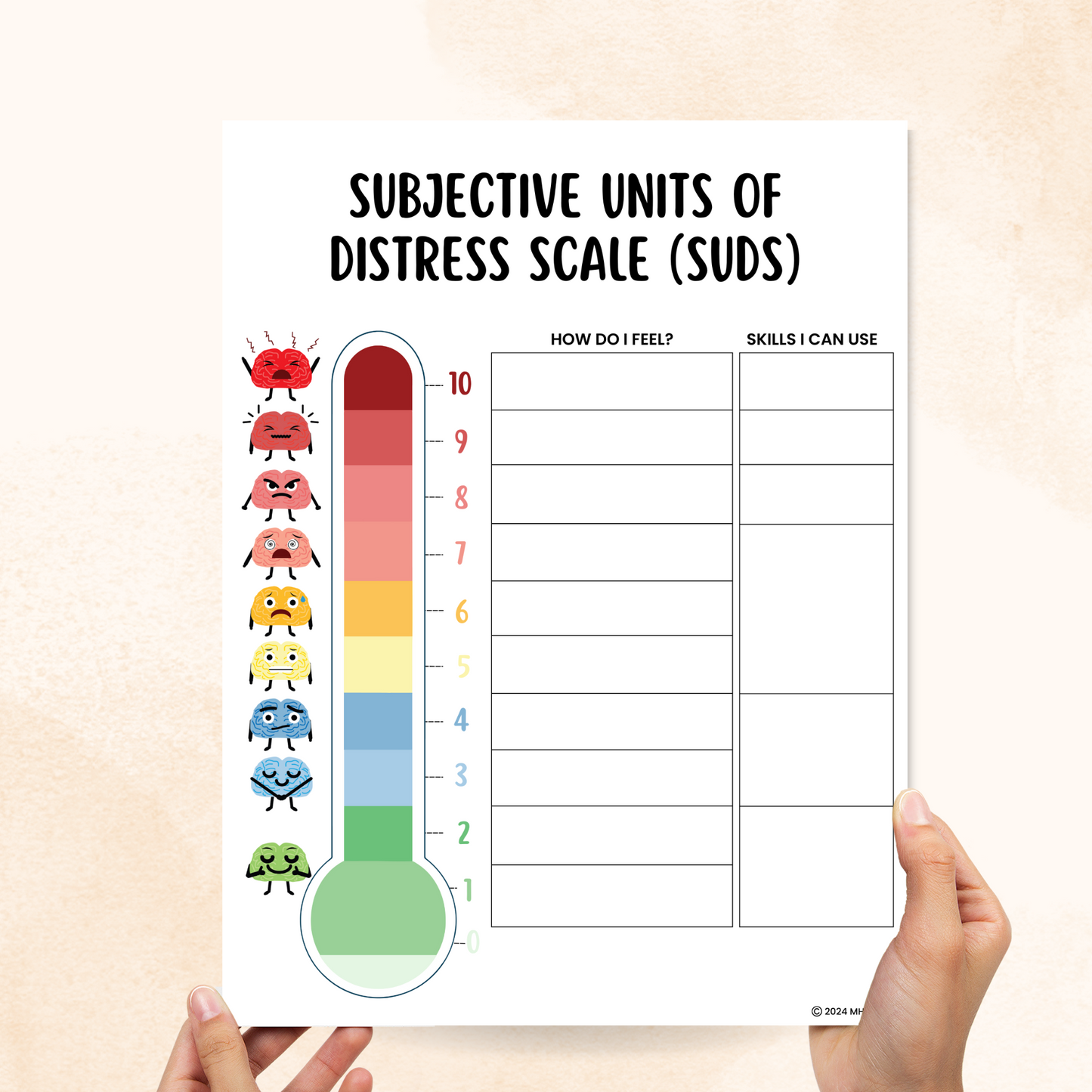
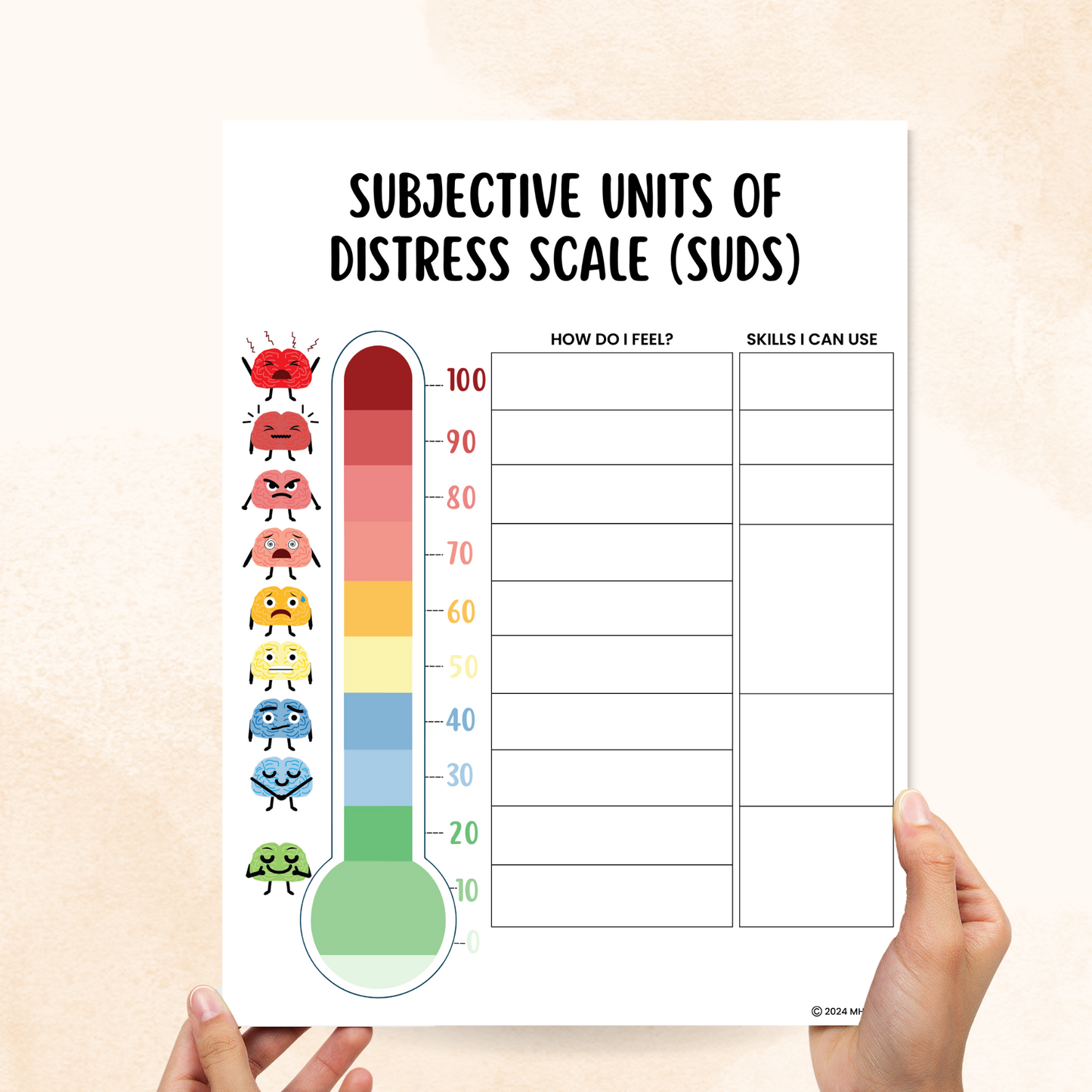

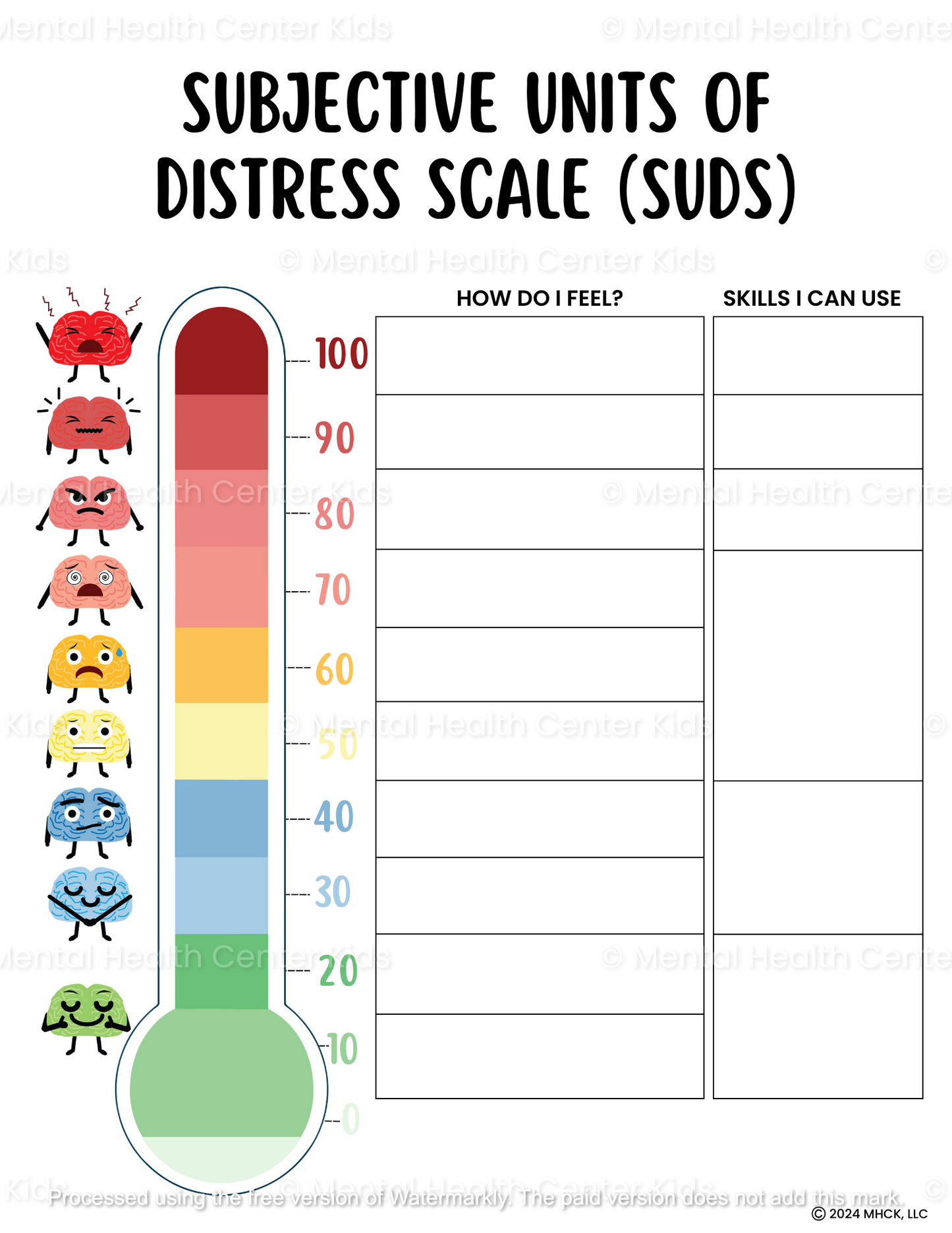

Subjective distress refers to discomfort, pain, or other stressful feelings a person is experiencing. This can be measured using the Subjective Units of Distress Scale, which is sometimes referred to as the SUDS Rating Scale. The SUDS rating scale measures the level at which an experience is disturbing or distressing to an individual ranging from 0 (calm state) to 100 (extreme distress). Alternatively, some SUDS use a 0 to 10 scale. The rating gives you a simple way to express the severity of your emotions, which is a good indicator of areas each person can work on.
The Subjective Units Of Distress Scale Worksheet helps clients practice rating their feelings and using them to communicate the intensity of their feelings. They have the flexibility of choosing between a 0-10 scale or a 0-100 scale depending on what resonates most with their preferences. In addition to rating their feelings, they can jot down coping skills they find effective for calming down.
Using this worksheet regularly helps kids and teens become more aware of their emotional states and take an active role in managing them. Whether you’re using these worksheets with young people as part of Cognitive Behavioral Therapy (CBT) for anxiety, Dialectical Behavior Therapy (DBT), or a different type of treatment, a calm environment is recommended.
This worksheet pairs well with our Subjective Units Of Distress Scale handout, which provides a visually appealing illustration and explanation of each SUDS level.
*This item is an instant digital download. A link to download your files will be emailed to you once payment is confirmed.
Want more resources like this? Check out our full catalog of DBT worksheets and handouts.
References:
- Benjamin, C. L., O’Neil, K., Crawley, S. A., Beidas, R. S., Coles, M. E., & Kendall, P. C. (2010). Patterns and predictors of subjective units of distress in anxious youth. Behavioural and Cognitive Psychotherapy, 38(4), 497–504. https://doi.org/10.1017/s1352465810000287
- Bluett, E. J., Zoellner, L. A., & Feeny, N. C. (2014). Does change in distress matter? Mechanisms of change in prolonged exposure for PTSD. Journal of Behavior Therapy and Experimental Psychiatry, 45(1), 97–104. https://doi.org/10.1016/j.jbtep.2013.09.003
- Instant digital download
- File: Fillable PDF - 2 Pages
- Size: 8.5" x 11"



